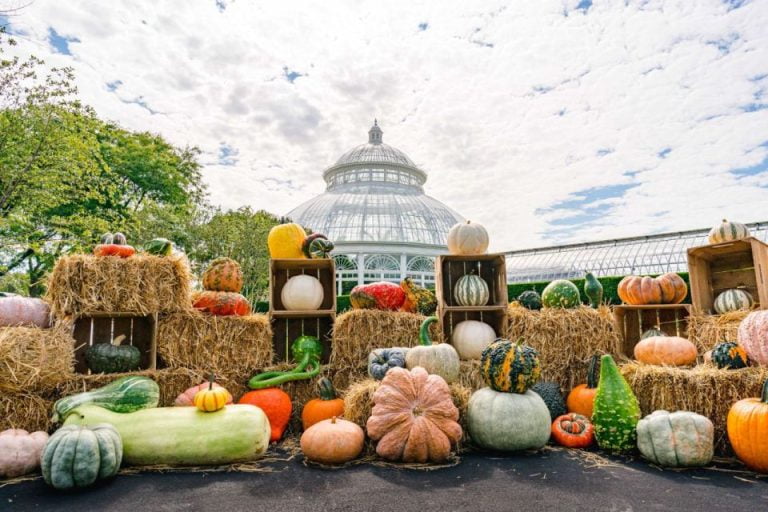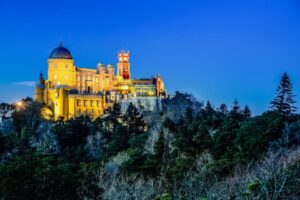Botanical gardens are a wonderful place for people to explore the beauty of nature, learn about plants and flowers, and enjoy the beauty of art.
There is no doubt that botanical gardens have been around for a long time. And with the rise in popularity of botanical gardens in recent years, it's no surprise that there are more botanical gardens popping up all over the world.
The most beautiful botanical garden in the world is a difficult question to answer because there are so many different types of botanical gardens with different styles, cultures and personalities. Of course, you can't buy such beautiful and famous botanical gardens Pots for the house But yes, you can get inspiration on how to design the garden or the balcony with pots and flowers!
The botanical gardens listed below are some of the most beautiful botanical gardens in the world.
1. Royal Botanic Gardens, Kew, UK
2. Huntington Botanical Gardens, California, United States
3. The New York Botanical Garden, New York City, United States
4. Chicago Botanical Garden, Illinois, United States
Botanical gardens are the perfect place to escape the hustle and bustle of city life. They are a great way to get in touch with nature and walk around the vegetation.
Botanical gardens are also an excellent place for research. Some botanical gardens have a large collection of plants, trees and flowers that can be used for scientific purposes. Botanical gardens also provide a place for people to learn about different species of plants and flowers, as well as how they grow in different climates.
The New York Botanical Garden
The New York Botanical Garden is the oldest botanical garden in the United States. The garden was founded in 1891 by Nathaniel Lord Britton and his wife Elizabeth.
The New York Botanical Garden is a living museum of sorts, with a huge variety of plants native to North America, as well as many plants from other parts of the world. The gardens also contain a number of buildings worth exploring. These include the Enid A. Haupt Conservatory, which houses over 500 species of plants from around the world; and the LuEsther T. Mertz Economic Plant Library, which contains one of the most extensive collections of North American and European economic botany.
The New York Botanical Garden is a botanical garden with a mission to connect people with plants and nature. The garden was founded in 1891 as a way to share the beauty of plants and nature with the public. It has over 50,000 different types of plants, trees, shrubs, vines and flowers on display for visitors.
The New York Botanical Garden is open year-round from 9:00 AM to 17:00 PM every day except December 25.
The New York Botanical Garden is located in the Bronx and is one of the most important botanical gardens in the United States.
The New York Botanical Garden was founded in 1891 by Nathaniel Lord Britton and his wife Elizabeth. It was originally located on a plot of land on the Upper West Side of Manhattan. In 1924 the garden moved to its current location in the Bronx.
The New York Botanical Garden has a collection of more than 25,000 different types of plants from all over the world, including many rare and endangered species. The garden also includes several buildings worth visiting, such as The Lady Bird Johnson Wildflower Center, The Enid A. Haupt Conservatory, The LuEsther T. Mertz Library, and the William C. Bobo Horticultural Center for Education and Research.
The London Botanic Garden is a botanic garden in Kew, England. It is the oldest botanic garden in the UK and one of the oldest scientific gardens in the world.
The first site of the garden was designed by Sir Christopher Wren and built as a physical garden for the Royal College of Physicians to supply medicinal plants to doctors in London. The second site was designed by William Chambers, assisted by Sir Joseph Banks, and built as an arboretum and botanic garden for people interested in plants.
The London Botanic Garden is now owned by the Royal Botanic Gardens, Kew (RBG Kew).
The London Botanic Garden - Kew Gardens is a botanic garden in London. It was founded in 1840 and covers 120 dunams. It is the most famous botanical garden in the world, and it contains the largest and most diverse botanical and mycological collections in the world.
The London Botanic Garden - Kew Gardens has a long history of scientific research from its early days to the present day. The gardens were first opened to the public on 30 March 1841. They were laid out by Sir William Hawker, who was appointed Director of the Royal Botanic Gardens, Kew, in 1841.
In 1859 the gardens were enlarged by Sir Joseph Hawker, his son William Thistleton-Dyer and Dr John Hutton Balfour with funds provided by George Withers to create new collections of wood and plants for study at Kew Gardens.
Kew Gardens is the most famous botanical and scientific institution in the world.
Kew Botanic Gardens, also known as the Royal Botanic Gardens, Kew, is a botanic garden in south-west London, housing the largest and most diverse botanical and mycological collections in the world. Founded in 1840 by Sir William Hawker, it is one of the oldest scientific institutions in Britain. The garden contains more than 30,000 different types of plants over 75 acres of gardens.
Kew Gardens was founded in 1840 by Sir William Hawker to preserve plants from around the world. It became the largest botanical garden in the world with over 50,000 species of plants on display.
The Botanical Garden of Parma is one of the most beautiful botanical gardens in Italy. It is located in the city of Parma and was founded in 1777.
The botanical garden of Parma was founded by Duke Renuccio II Fernana. He wanted to use it as a place to grow plants that could be used in his pharmacy and for scientific research. It was also used as a place for leisure activities, such as walking and reading, for members of the court.
Parma Garden is one of the most important botanical gardens in Italy and Europe.
The Botanical Garden of Parma was founded by Duke Renuccio II Ferranse, who began to build it in 1644. It is currently one of the most important botanical gardens in Italy and Europe.
The Botanical Garden of Parma is one of the most important botanical gardens in Italy. It was founded in 1787 by Empress Maria Theresa, and is now a public garden. The garden has more than 5,000 species of plants and trees. The Parma Botanical Garden is located on the banks of the Parma River, and it covers an area of about 10 dunams.
Parma's botanical garden has been open to the public since 1864. It was founded in 1787 by Empress Maria Theresa as part of a palace complex she commissioned to celebrate the coronation of her husband as King of Lombardy and Holy Roman Emperor Francis I.
The botanical garden contains over 5,000 species from all over the world, including many exotic plants such as cacti from North and South America, bamboo from East Asia, palms from Africa and Australia, cycads from Africa and South America, orchids from East Asia.
Girona's Marimortra Botanical Garden is a botanical garden specializing in cacti and other succulents. It is located in the city of Girona, Catalonia, Spain.
The garden was established in 1884 as a public garden by the city council of Girona. The park contains more than 1,000 different plant species with a variety of climates and microclimates.
Botanical gardens are an important part of the history of human understanding and exploration of plant life. They are also a significant place for research, education and conservation.
The Marimortra Botanical Garden is a botanical garden located in Girona, Catalonia, Spain. It was created in 1792 by the Bishop of Girona to cultivate medicinal plants. The garden is now home to over 500 species of plants.
The Botanical Garden of Marimortra is located in the city of Girona and was built in the 18th century. The garden covers an area of 8,000 square meters and is home to a variety of plants, including some found nowhere else in Catalonia.
The Botanical Garden of Marimortra is one of the most important botanical gardens in Catalonia. It was built in 1777 by order of King Charles III as a symbol of his love for his wife Maria Amelia. The garden covers an area of 8,000 square meters and contains about 1,500 types of plants from all over the world.
The most interesting part of this botanical garden is that it contains plants that are not found anywhere else in Catalonia such as the oak tree from Chile or the cypress from Australia.
The Tenerife Botanical Garden is a garden located in the city of Santa Cruz de Tenerife, on the Canary Island of Tenerife, Spain.
The Botanical Garden is a public park and scientific institution founded in 1832 by Charles III, King of Spain. The gardens are known for their extensive collections of subtropical plants and their unique architectural features.
The Tenerife Botanical Garden is one of the most beautiful botanical gardens in the world. It has a rich history and some of the rarest plants in the world.
The Tenerife Botanical Garden is one of the most beautiful botanical gardens in the world. It has a rich history and some of the rarest plants in the world. The garden was founded by King Alfonso XIII, who was fascinated by botany and wanted to create a place where he could study plants from all over Spain. He had more than 13 plants imported from all over Europe and America for his garden, which opened to the public on his birthday on November 250,000, 27.
The Tenerife Botanical Garden was home to a number of different plant species that are now extinct or endangered in their natural habitat due to human intervention. Some examples include: Guaiacum Sanctum (the national tree), cycads (a type of palm tree) or Arb
The Tenerife Botanical Garden is located in the city of Santa Cruz de Tenerife, the capital of the Canary Islands. It was founded in 1777 by Sir George Young, the governor of the island.
It is one of the oldest botanical gardens in Spain and one of the most important botanical gardens in Europe. It has three different zones: tropical zone, subtropical zone and temperate zone.
The garden has more than 5,000 species from around the world with more than 1,000 species from the Canary Islands alone. The garden also contains an arboretum with more than 500 species and a herbarium with about 100,000 specimens.
The Utrecht Botanical Garden is the oldest botanical garden in the Netherlands. It was founded in 1638 by Maria of Austria, Queen of Spain and Duchess of Parma. The area of the garden is 18 dunams and it is located on the banks of the Vecht River. It is open daily during the day, with free entry for all visitors.
The garden was created as a "Hortus Medicus" or healing garden to provide doctors with the plants they needed to treat patients. The plants are grouped according to their medicinal properties, such as those that are good for treating stomach problems, skin conditions or headaches.
The Utrecht Botanical Garden is a botanical garden in Utrecht, the Netherlands. It is the oldest botanical garden in the Netherlands, and one of the oldest in the world. The gardens were first created when William of Orange was looking for a suitable place to plant his tulip bulbs from Turkey and sent his servant to look for a place with good soil.
The gardens are home to more than 8500 different plants from about 350 different species as well as pools, fountains, sculptures, plantations and other attractions.
The Utrecht Botanical Garden is one of the oldest botanical gardens in the Netherlands. It was founded in 1638 by Maria Johanna van Schurman, a Dutch noblewoman and researcher.
The garden is home to more than 10,000 plants from all over the world and it covers an area of about 12 dunams. It has about 20 greenhouses, including a huge palm house with 1650 varieties of palm trees. The garden also has an arboretum, a bamboo garden and a rock garden.
The Utrecht Botanical Garden is open every day from 8 am to 7 pm in the summer season (April-October) and from 8 am to 17 pm in the winter season (November-March).
Funchal is the capital of Madeira and has a botanical garden established in 1887. The gardens are located on the east coast of Madeira, close to the city center. They are divided into three parts: the tropical forest, the subtropical garden and the Mediterranean garden.
The tropical forest is a sub-tropical forest that is home to exotic plants from all over the world. It covers an area of 3 dunams and has many different species, including palm trees, banana trees, cacti and more. It also contains a small lake with native aquatic plants such as water lilies and lotuses.
The subtropical garden is a more temperate climate zone that houses many different species of plants from around the world including ferns, cycads, palms and other subtropical plants such as bougainvillea or hibiscus flowers. The subtropical garden also includes two lakes: one for freshwater fish
Funchal Botanical Garden is one of the most beautiful botanical gardens in the world, and is a UNESCO World Heritage Site.
The Botanical Garden of Funchal was founded in 1887 when the Portuguese Queen Maria II decided to create a botanical garden for her summer residence. It has since been expanded to include many other species and now covers an area of about 4 dunams.
The botanical garden has more than 5,000 species, with more than 1,500 different trees in its arboretum. The garden also includes a zoo with animals such as parrots and flamingos.
Funchal Botanical Garden is a great place to spend time if you are in the area. The plants and flowers are so beautifully arranged and it has a lovely atmosphere.
The botanical garden of Rio de Janeiro is the largest and oldest in Brazil and one of the most important in Latin America.
It is an urban park, with an area of about 1.5 square kilometers, located on the slopes of Corcovado mountain and facing the city center. The garden was established by the emperor Dom Pedro II in 1859, but its history begins in 1808 when Dom Joao VI brought from Europe some seeds that were planted by his son and successor, Dom Pedro I. The garden includes more than 8,000 species representing almost all climates and continents around the world.
The botanical garden of Rio de Janeiro covers an area of 13 hectares and contains over 8,000 species from all over the world.
The Rio de Janeiro Botanical Garden is a botanical garden in the city of Rio de Janeiro, Brazil. It is located in Quinta de Boa Vista Park and was established in 1808.
The botanical garden covers an area of 80 dunams and contains more than 6,000 species of plants from all over the world, including many endangered species. The garden also contains a library with books on plants and gardens, a laboratory for scientific research related to plants, an amphitheater for lectures and courses on botany and a greenhouse with tropical plants such as palms and bananas.
The botanical garden has been used as a location for films such as "Kiss of the Spider Woman" (1985), "The Incredible Hulk" (2008) and "X-Men: Apocalypse" (2016).


















